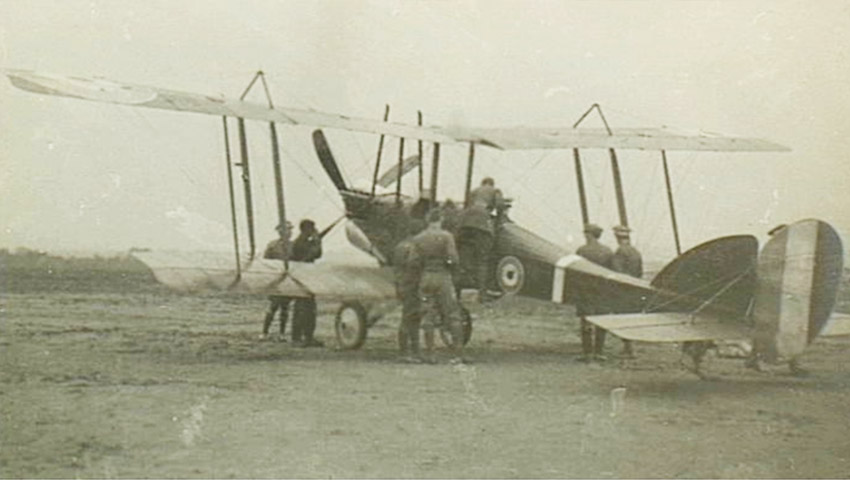In the days surrounding Anzac Day, Defence Connect will be looking back on the history of the Australian Defence Force branches, with the current series focusing on the Royal Australian Air Force.
To continue reading the rest of this article, please log in.
Create free account to get unlimited news articles and more!
Early days
While the RAAF wasn't officially formed until 1921, its foundation was set in 1911 when Britain decided aviation should become a part of its armed forces, in which Australia followed suit, establishing a flying school the next year.
The first flights by the Central Flying School would take place in 1914, the same year that the First World War broke out, with Australia sending militia aviation units, known as the Australian Flying Corps (AFC), to assist with capturing German New Guinea.
This would prove unnecessary, with the AFC not needed during that operation, and it wouldn't be until nearly halfway through 1915 before the Australian air units were called upon for the first time in combat scenarios, in the "Mesoptamian Half Flight", where Australia was tasked with assisting India in protecting British oil depots.
The AFC would go on to earn their stripes in the Middle East, Britain and France, with one pilot earning a Victoria Cross in 1917, Frank McNamara, who carried out a daring rescue mission for one of his fellow squadron members, despite being severely injured by a howitzer shell prematurely exploding and embedding shrapnel throughout his leg.
Following the end of hostilities in 1919, the AFC was disbanded (as well as the rest of the Australian Imperial Force), but training continued to operate under the Army's banner until 1921, when the Australian Air Force was established as an independent branch.
Later that year, King George V give permission for the service to use the prefix "Royal", and the RAAF was born.
One of the men pushing for the RAAF's independent status was Richard Williams, who would go on to become known as the "Father of the Royal Australian Air Force", and who personally drew up the submissions to create the branch.
Williams would become the first Chief of the Air Staff for the RAAF, a role he would rotate in and out of for the better part of two decades.
World War II
When Britain declared war on Nazi Germany in September 1939, Williams was serving as Air Officer in charge of Administration at RAF Coastal Command, with bitter rival Stanley Goble filling the role of CAS when Australia committed six squadrons to Britain for their war efforts.
At this point, the RAAF had increased its personnel by 250 per cent in under five years to 3,500, and had 12 squadrons at the ready, with a further six planned.
The first RAAF aircrew in Britain had actually already been there to collect Short Sunderland flying boats and return them to Australia, however they would quickly be reassigned as the 10th RAAF Squadron, and deploy to Tunisia.
The RAAF would soon expand rapidly following Australia joining the Empire Air Training Scheme for basic training at home, before receiving more advanced training in Canada or Zimbabwe.
About 20,000 Australian personnel served with Commonwealth air forces in Europe as a result of the training scheme.
Australia would soon be called upon to supply Commonwealth air forces, with British manufacturing constantly targeted by Nazi squadrons, which would eventually see British designed aircraft be integrated into the RAAF, despite being built locally.
Seventeen RAAF squadrons would initially serve in Britain, or with the Desert Air Force in North Africa and the Mediterranean, and much like the RAN, were initially caught off guard when the Pacific War broke out, with war suddenly on Australia's doorstep thanks to the Japanese.
While the RAAF would slowly look to bring units closer to home, that quickly ramped up following the bombing of Darwin, which saw the loss of 236 lives, the largest ever attack mounted by a foreign power on Australia.
With Darwin entirely unprepared for such an attack of that scale protection-wise, with just 32 RAAF aircraft tasked with defending against 188 fighter aircraft and 54 bombers from Japan.
It understandably was a disaster, and Australia upped their efforts to both acquire more aircraft, and recalling squadrons from the northern hemisphere to assist with the Pacific War.
The RAAF would purchase US-constructed P-40 Kittyhawks as well as designing their own, the CAC Boomerang, which would both be used to fight the Japanese, most notably on the Kokoda Track in a joint effort to push back the advancing Japanese.
The RAAF's primary task quickly turned into protecting Australia and its closest sea lanes, as well as conducting operations against Japanese forces and installations around the pacific.
By the end of World War II, over 200,000 men and women had served in the RAAF, with 9,780 casualties.
The RAAF had evolved into a massive force over the course of the conflict, being the fourth largest Air Force by size with over 150,000 personnel operating 6,000 aircraft when Japan surrendered in September 1945.
To be continued.

 Login
Login







